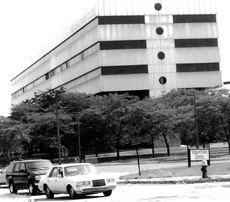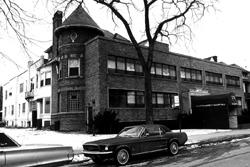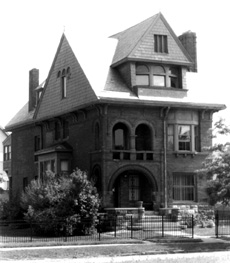By Valerie Gliem
Health System Public Relations

Photographs, old letters, certificates, medical artifacts and testimonials collected by U-M researchers reveal the unique history of medical care in southeast Michigan’s Black community between 1940 and 1969.
Now that rich history, collected through the U-M’s Kellogg African American Health Care Project, is available to anyone. Researchers have placed the information—gathered from physicians, nurses and others who worked in and were treated at Black proprietary hospitals and small doctors’ offices—in public repositories around the region.
Repository locations are the Bentley Historical Library and the Center for Afroamerican and African Studies at the U-M, the Walter P. Reuther Library at Wayne State University and the Charles H. Wright Museum of African American History. The information soon will be available at the Burton Historical Collection at the Detroit Public Library.

“We’ve been able to document a very important era in health care in southeast Michigan and I think we were surprised by some of the findings,” says Norman L. Foster, associate professor of neurology and senior research scientist at the Institute of Gerontology.
Project research revealed that Detroit was among the cities with the highest number of Black hospitals. In addition, most were Black proprietary hospitals, meaning they were owned and operated by African Americans. “There was a tremendous investment that individuals made in trying to deliver the best health care to their own people who were being denied access to care by others,” says Foster, who, with Harold W. Neighbors, associate professor of health behavior and health education, led the research team.
Numerous documents reveal the story along with 41 oral histories that provide a living record. “All of the stories are important and unique in their own way,” says George Myers, a research investigator. One of the most compelling stories is that of Dr. Charles Wright. “Not only is he a physician, but he also played an instrumental role in integrating the health care and medical system in Detroit,” Myers says.
The project, sponsored by the W. K. Kellogg Foundation, went beyond building the repository. The team assimilated an exhibition later donated to the National Center for the Advancement of Blacks in the Health Professions.
“It highlights the 18 Detroit-area Black proprietary hospitals, but it also tells the history of health care for African Americans in southeastern Michigan,” Myers says. “It’s really a great collaborative effort on the part of the Medical School, various Detroit institutions and the community.” The project also included the creation of two related conferences, one in October 1997 and a second in February 1999.

Community members played an important role in making the project possible, Myers notes. “Most of the information that we found was actually in the basements and attics of people’’ who lived through and practiced during that era. For example, included in those materials were poignant letters to various Detroit agencies and institutions that addressed racial discrimination in health care.
Foster became interested in pursuing the history of African American health care through his work on developing Satellite Diagnostic and Treatment Centers that provide access to dementia care and research for underserved populations.
In the process of developing one such clinic in Detroit, he became aware of the many barriers to dementia care for African Americans. He found that many of the barriers were shared by all individuals with dementing disorders. But he recognized that elderly African Americans also faced barriers due, in part, to attitudes about health care for chronic illnesses stemming from past health care experiences.
Neighbors was attracted to the project because of his work on barriers to the use of professional help for mental health problems among African Americans in the Detroit area. He was struck by the similarities in comparing his findings on access to health care with Foster’s work. “This project was an excellent opportunity to understand current health behavior within a larger historical context that is unique to the African American experience,” Neighbors says.
Foster says the story has a bittersweet ending. “On the one hand there’s the tragedy of this loss of grassroots health systems among the Black community,” he says. “On the other hand, its demise was, in part, because of improved access to health care, which was the ultimate goal of all of these pioneers to begin with. So they succeeded in achieving their ultimate goal and they also demonstrated the ability to overcome obstacles to provide good health care.”
Although the project is completed, the Medical School has committed to maintaining the project’s Web site (www.med. umich.edu/haahc/), where visitors are given a taste of the information available at the public repositories.
Although the information is available to all, Foster hopes the collection influences two audiences in particular. “I hope that we can encourage students who are considering careers in the health sciences to explore the information. It’s a record of achievement in African American history. Their stories can encourage people of all types to overcome their personal barriers to succeed in the health sciences.” He also hopes the information will influence those who are trying to develop new health systems so that they may be more sensitive to the issues and attitudes of all patients.
Foster, Neighbors and Myers believe the project’s goals have been met.
“We were able to gather and archive information that fills a gap in medical history in southeastern Michigan. Because of that, other efforts have been undertaken to document other experiences of African Americans,” Myers says. “We far exceeded our goals. I really feel honored to have been able to document an important part of American history.”

